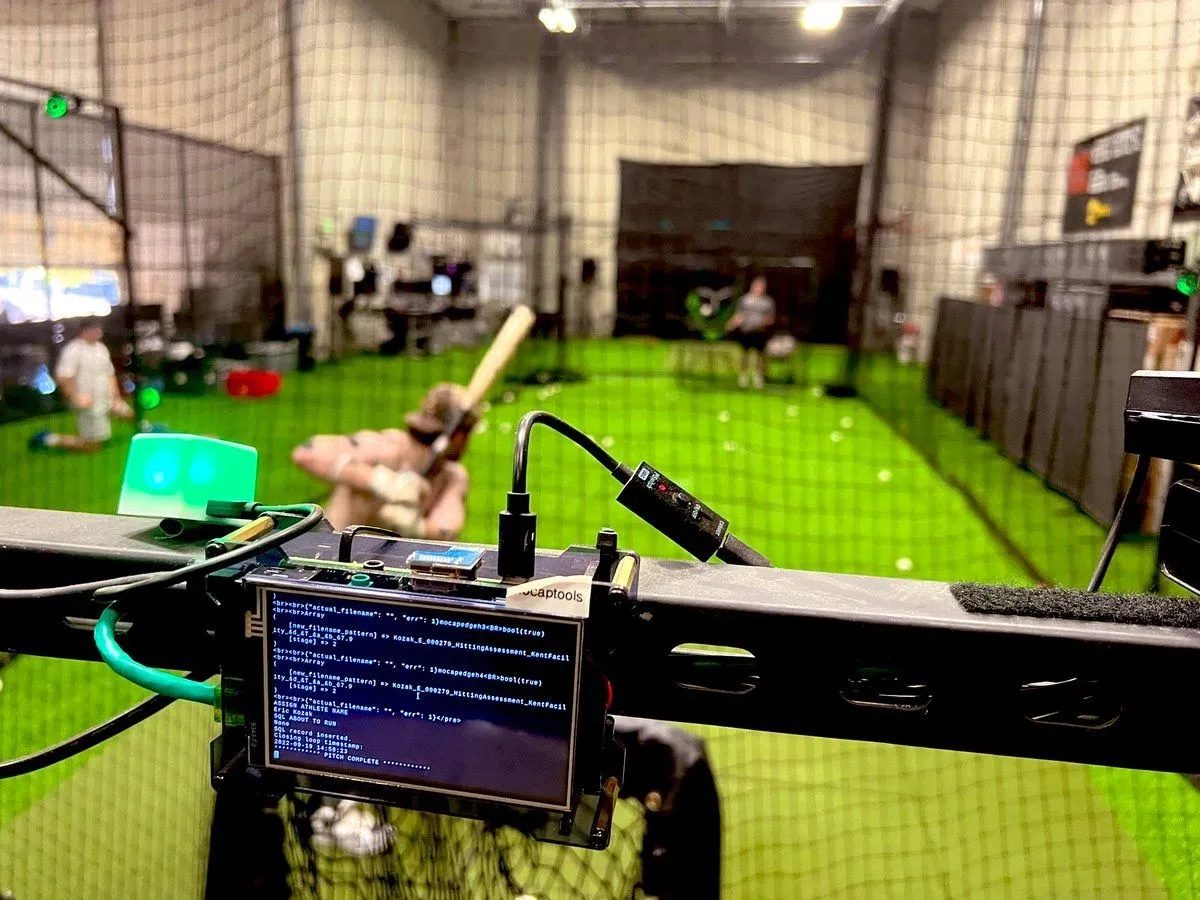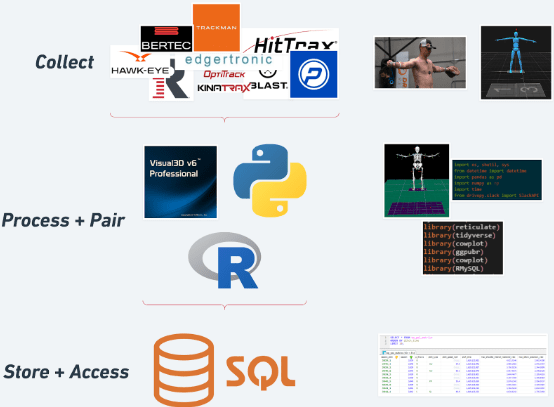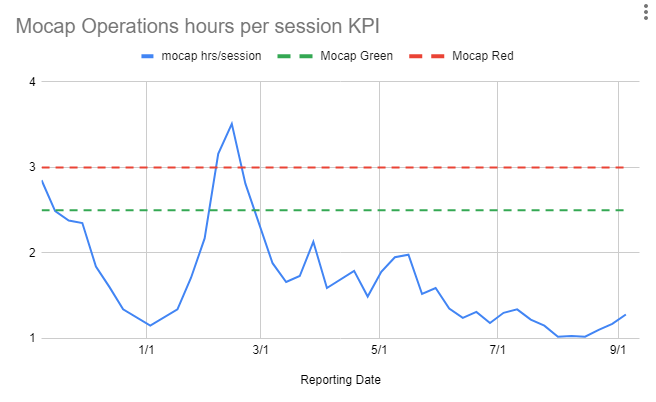A Look Under the Hood: How Driveline Sport Science Collects, Processes, and Analyzes Thousands of Athletes’ Biomechanics Data

Driveline Baseball has long been baseball’s applied biomechanics leader. Since 2008, when founder Kyle Boddy started building his first motion capture lab in the aisles of Home Depot, Driveline has leveraged the value of objectively quantifying human movement.
The lab has improved by leaps and bounds since then. Driveline R&D has iteratively refined the technology and underlying systems in our motion capture ecosystem. Our current setup, The Launchpad, features simultaneous markered and markerless motion capture data as well as a wealth of additional tracking technologies like Rapsodo, Trackman, HitTrax, and Pulse. Gone are the days of using hacked Wiimotes to measure biomechanics (true story).
And that lab has enabled us to learn a lot of things. We’ve studied the effects of weighted baseballs on pitching mechanics, validated biomechanics technologies, and leveraged biomechanics to drive our training protocols for both hitters and pitchers.
Our Biomechanics Group has written and talked extensively on both the Driveline Blog and Driveline R&D podcast on what we do with biomechanics and accessory data once we get it. Some excellent examples include our forward dynamics and computed muscle control simulations. Less commonly talked about is how we get to the point where we’re ready to analyze our data. How do we go from raw 3D coordinates to kinematic and kinetic data that analysts, coaches, and other R&D staff can use? Additionally, how do we combine data from so many sources to enhance our insights without overtaxing staff??

In the lab, we’re always running a handful of different technologies. So how do we manage it all? As anyone who’s interfaced with multiple baseball technologies before knows all too well, each additional tool is another job for the coaches or player development staff. As the tech stacks up, the workload quickly becomes overwhelming.
Unless…
Each additional toy is another job unless you build the underlying systems to reduce the amount of human oversight needed. How do we efficiently process biomechanics data and stream it into our broader player development ecosystem?
That’s what we’ll talk about here.
Less Time Collecting; More Time Developing
Even though several technologies may be running for any given individual motion capture assessment, custom software solutions allow the Launchpad to be run by one person – though we still need another set of hands to feed the pitching machine for hitting assessments.
Proprietary Driveline software syncs our Edgertronic cameras to any Stalker radar gun enabling automatic triggering when a pitch is thrown. This eliminates the need for manual Edgertronic operation. Edgertronic clips are then synched to athletes’ TRAQ profiles and fed into our internal markerless motion capture pipeline.
Rapsodo and Trackman ball tracking data are automatically uploaded to our internal databases. Visual3D and Python processing pipelines upload every pitch/swing (markered or markerless) to the same data warehouse. Joint kinetics, kinematics, energetics, and force plate data are matched on a per-pitch level while session and player-level tables provide the necessary metadata for custom data selection and filtering as needed. Custom data fidelity checks filter out any troublesome inconsistencies that ran into issues along the way.
Ball tracking and full signal biomechanics data get paired on a per-pitch level. This entire process, from placing markers to generating custom reporting that populates in an athlete’s Traq profile, occurs within 24 hours of initial data collection. If we have a high priority assessment that requires an expedited turnaround time, we can manually run our processing pipelines to generate the necessary deliverables ahead of the next-day turnaround.
All of these automations free up R&D employees to do what they do best: support coaches and players, drive further insights, and continually improve the underlying systems.
Markerless and Markered Motion Capture Processing
Since Driveline’s first motion capture processing pipeline over a decade ago, we have been working on making biomechanics data processing as smooth as possible. Today, we are on the sixth iteration of our processing pipeline (v6) and the amount of human oversight needed to take data from assessment to applicable insight has never been lower.
We started trying to keep track of how many labor hours go into a single mocap session back in 2019. Back then, we were turning around reports in ~7 days and it was taking 5+ combined labor hours per motion capture session. Today, we do more with that biomechanics data than we ever have and during peak volumes it takes us less than 90 minutes of labor per session from end to end. This summer, there were over 500 motion capture sessions in the Launchpad and it only cost us ~600 labor hours.

But what gets us excited about V6?
without giving away the secret sauce…
Updated Pose Estimation & Skeleton Model
Visual3D has been the leading research-grade biomechanics processing platform for several decades. We feel no other platform offers comparable options when it comes to pose estimation and linked-segment modeling. It is for these reasons that we funnel all of our markered and markerless motion capture data through Visual3D for foundational pose estimation, inverse kinematics, and inverse dynamics calculations before moving to Python and R for more intensive and application-specific signal processing.
With V6, we have used Visual3D to further fine tune our linked-segment model so that it more closely captures how our athletes move. Our updated model is less constrained, allowing segments on the distal end of large range of motion joints, such as the shoulders and hips, to move freely relative to their neighboring segment. Previously, constraining segments on opposing sides of these joints sometimes caused pose estimation problems and less accurate kinematic and kinetic profiles.
Energy Flow + Force Plates
V6 houses two new data classes in addition to the traditional kinematic and kinetic data: energetics and force plates. Energy flow analyses allow us to see when, where, and how much kinetic energy is moving between body segments. Force plates tell us how our athletes are interfacing with the ground. Both of these data sources help provide a more complete picture of how athletes move during each pitch/swing.
Raw & Processed Data
V6 houses all our unfiltered, unprocessed motion capture data separate from the processed data. Any interested employee or client can access it and perform custom analyses for their own projects. If we want to test different filtering settings? Cool. If we want to try out a different set of model assumptions? No problem. If we want to explore a new metric derived from global kinematic/kinetic data instead of relying on typical coordinate system and rotation sequence conventions? We can.
Where We’re Going
Less invasive data collection means larger samples. With these larger samples, we can start to identify, on an individual and group level, what really matters. Paired markerless data with live-AB results drill right down to what get’s hitters out. Markerless data paired with ball tracking and per-play results allows us to analyze baseball at a level that almost didn’t seem possible just a few years ago. Want to quantify how a pitcher’s deception influences an expected run value of a pitch? We can. Want to measure how a batter adjusts to an off-speed pitch thrown in a hitter’s count? That’s possible, too.
Less labor intensive data collection also means more attention to other technologies to continue building our paired databases. The most powerful insights typically come at the intersection of sport science sub-disciplines. Less labor intensive allows us to live there, focusing more on the interplay of technique and performance.
Better systems automation and organization tightens the feedback loop between motion capture and actionable insight. No more dedicating practice time to getting markered up and transported to some separate biomechanics lab to get a baseline or a retest mocap done. Now we can do it with minimal disruption to the practice plan, and without killing R&D staff with labor-heavy data cleaning or processing. All so we can keep digging into how to improve on-field performance.
Written by Dr. Kyle Wasserberger – Sports Scientist
We can help you with your biomechanics data. Learn more about our Biomechanics Services here
Comment section